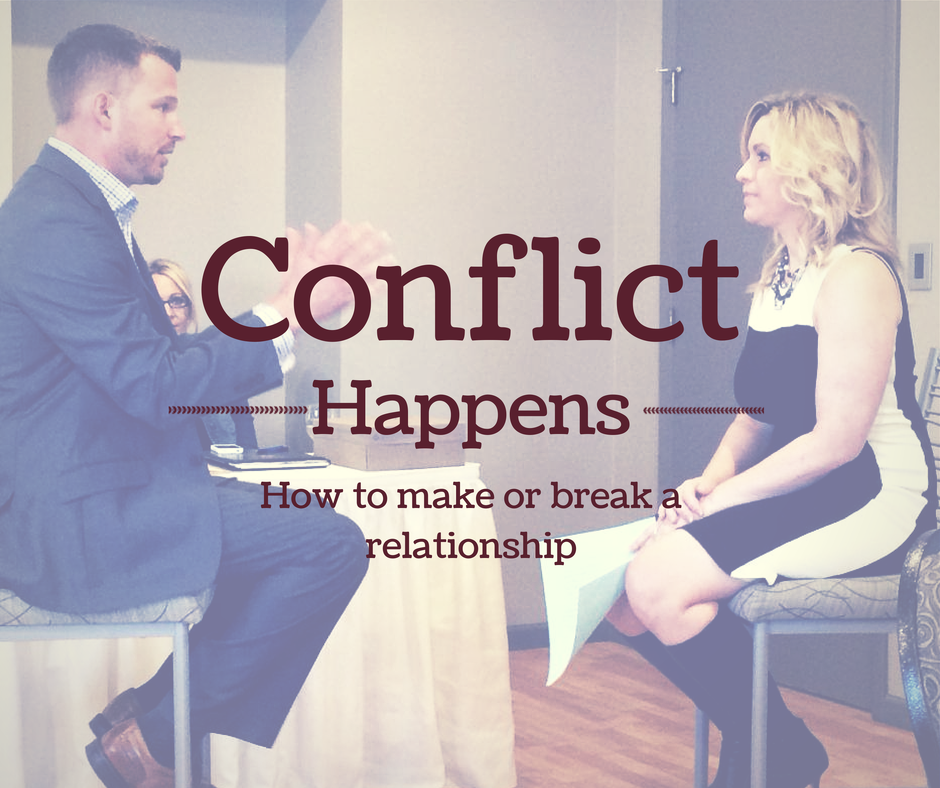Trust. Suspicion. And why a single conversation can make (or break) a relationship.
Part 1 of a 2-part series about conflict

Have you ever been in a conversation that felt more like a sparring match than a productive discussion? We’ve all been involved in them, often when there’s a lot at stake.
We’ve been talking in this space about the value of functional leadership and how healthy teams develop trust and have less conflict. One sure way to unravel great work is to handle conflict poorly.
Conflict happens.
But if a team begins to not trust each other, a solid relationship can turn in another direction -- with just one poorly held conversation.
I love the way Andy Stanley discusses the idea of trust vs. suspicion and its impact on relationships within a team or between two people in an organization.
If you’re not moving toward building trust, you’re moving toward building suspicion. So every conversation counts. [Tweet]
How to damage a great relationship in a matter of minutes
A great relationship with a teammate can be damaged in a matter of minutes if you hold a conversation with them that’s filled with accusations, suspicions, distrust, conceit, ego, emotion or insensitivity.
Even if you’re beginning to work on improving your team relationships, it can still flip back very quickly if you’re not working on every relationship and every conversation.
- So how do you make every conversation count?
- How do you make every interaction with a teammate end with a little more trust instead of building levels of suspicion?
The dynamic of avoidance
I had the opportunity to hear Joseph Grenny speak at the global leadership summit recently. He discussed his book, Crucial Conversations, Tools for Talking When Stakes are High.
He says the answer is figuring out how you can have that conversation so the person you’re talking to trusts you more, not fears you more.
The natural reaction to a stress-filled relationship is avoidance.
Instead of tackling the issue head on, you avoid having that tough conversation. Because you fear what it will do to the relationship or you, as an individual.
As a result, progress stops. You can’t move forward the way you need to. And the other person doesn’t have the opportunity to contribute in a positive way.
From the larger perspective, if you start avoiding situations that come up between two people on a team, it creates other problems that go beyond those two people.
The safety ingredients
Grenny suggests it’s possible to resolve any conflict in a way that increases trust in a relationship -- and on a team.
He mentions there are two safety ingredients that need to be introduced into the conversation:
Mutual purpose and mutual respect.
So as you open a critical conversation, it’s important:
- To remind that other party that you’re on the same team
- That you’re focused on the same goals as they are
- That you both are dedicated to the bigger picture and finding common ground
It might be a big project. It might be a big goal. It might be an event you’re planning. No matter how big or small those goals are, you have to both be focused on those items.
How to set up a conversation to minimize potential for conflict.
The stage for conflict is often set when one person is perceived as “getting their way” at the expense of someone else. That’s not the kind of outcome a healthy organization should accept.
Important, game-changing conversations don’t have to be a tug of war, where you’re both pulling for more rope or trying to move the other person.
Here are a few ways to set up a conversation to prevent conflict:
- Choose to physically sit on the same side as the other person. It helps remove the confrontation aspect from the situation. When you’re sitting across from a person, what does it look like? It looks like a conflict! If that same conversation was conducted with both people sitting on the same side and looking toward solutions, how much more productive would that be?
- Imagine you’re both looking at a white board with a goal written on it. And you’re both having a conversation that’s focused on that goal. This often removes the element of fear, because you can make it more personal to each person. As you’re both sitting there looking at that whiteboard, it’s important for the person you’re talking with to know that you respect them throughout the conversation.
- In clear terms, state specific reasons why you respect the individual and recognize their contributions in your conversation. Do not make statements that seem to undermine the person’s authority. Don’t discard or discredit work that has been done. It’s important that each individual involved has respect for the work that has lead up to that point.
Healthy conversations: questions to ask yourself
- What critical conversation can you have that could move an initiative or your company forward?
- What are some of the things that you can do to move your next critical conversation through in a healthier manner?
- How can you set the stage for a conversation that will prevent damage to the trust that’s needed to move your team forward?
Look for the next article in this series, coming to the Mavidea blog soon!
Related articles...
My Leadership Journey...What Example Are You Setting?
7 Things You Can Do to Make Your Employees Love You